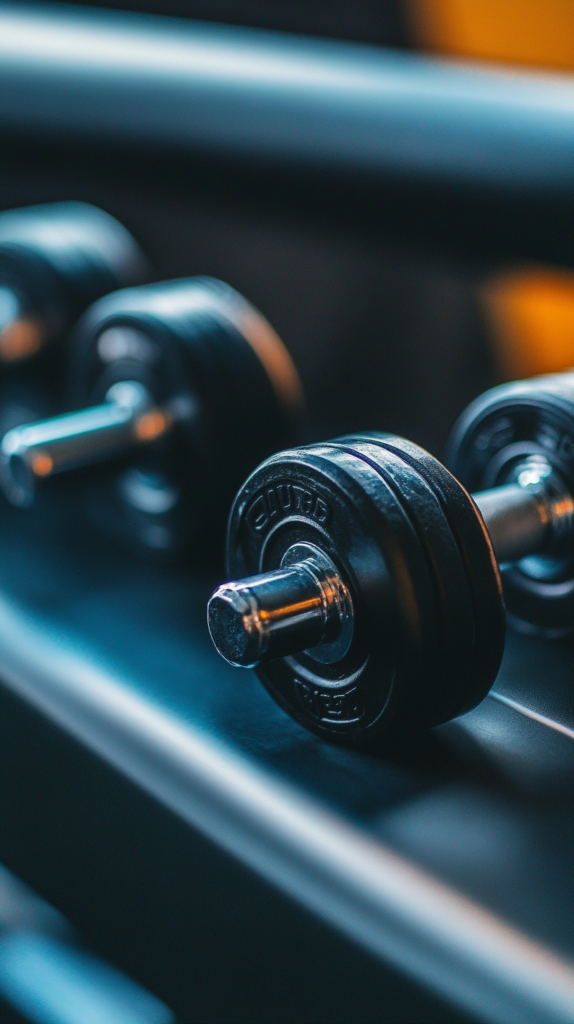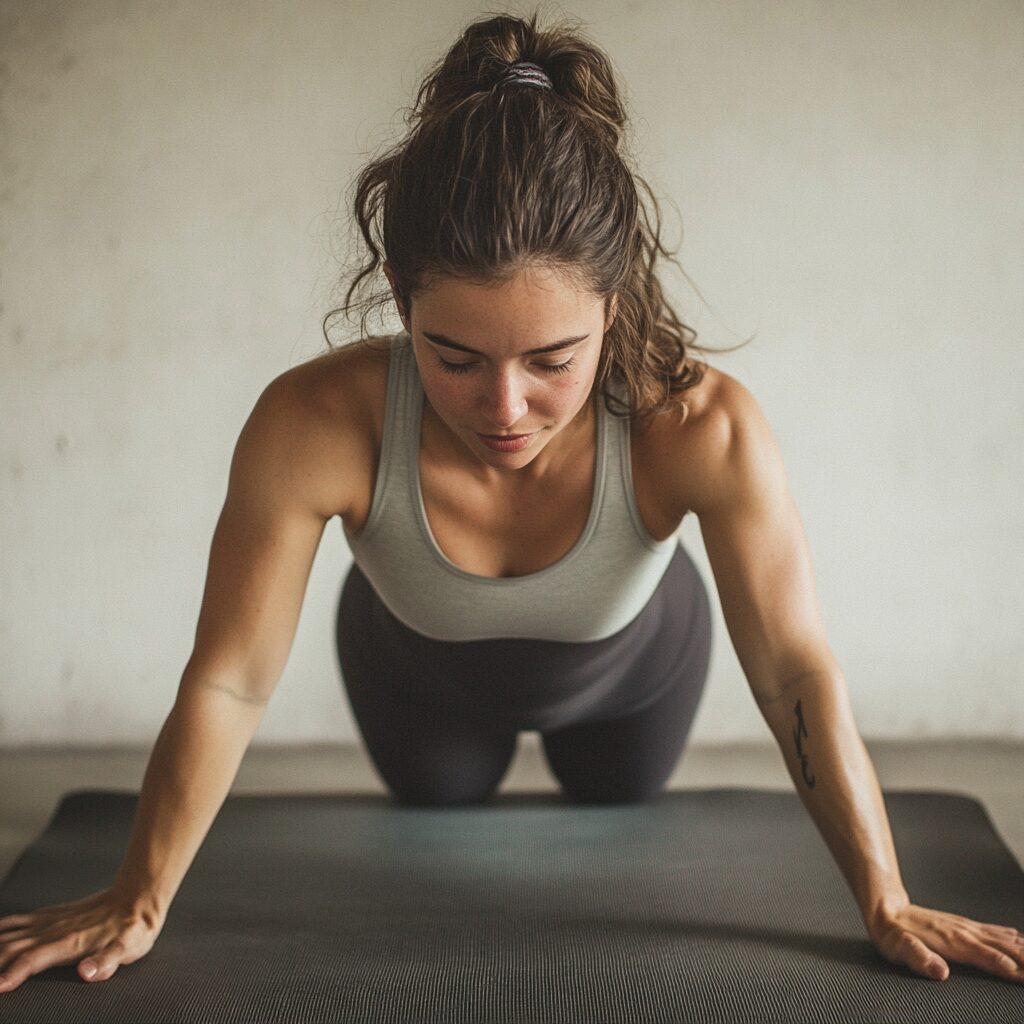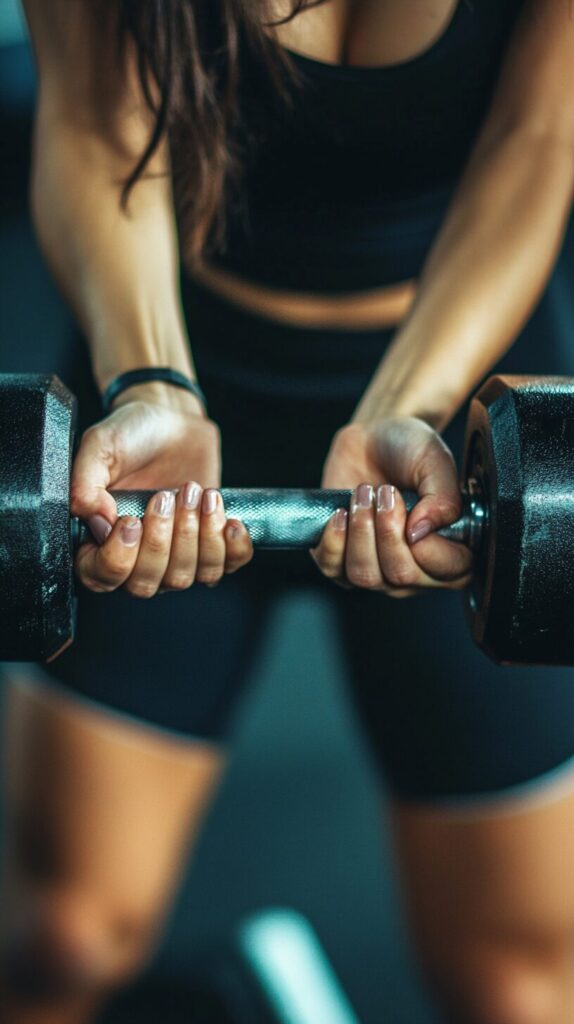Strength training and weight lifting are often perceived as intimidating for women, yet they are among the most effective forms of exercise for improving overall health and fitness. Despite the prevalence of misconceptions surrounding strength training for women—such as concerns about becoming “too bulky” or a belief that weightlifting is solely for men—attitudes are shifting. Thanks to the ever-evolving fitness industry and growing awareness, more women are embracing these powerful forms of training, discovering their ability to build strength, achieve their fitness goals, and boost self-confidence.
It’s important to remember that every journey has a starting point. Regardless of your level of experience, everyone begins as a beginner—it’s part of the process. The fear of starting something new is natural, but don’t let it deter you from incorporating strength training into your life. The benefits extend beyond physical improvements; strength training empowers you mentally and emotionally, fostering resilience, determination, and a sense of accomplishment.
Whether you’re stepping into a gym for the first time, exploring beginner-friendly strength programs, or learning about proper techniques and form, each step forward matters. Over time, strength training can become an integral part of a healthier lifestyle, helping you feel stronger, fitter, and more confident in your own abilities. So embrace the challenge—it could be the start of something transformative.
Strength Training for Women
It’s no surprise that only about 20% of women who train choose to lift weights. Common myths—such as the belief that heavy lifting will make women look “bulky” or that it poses a danger to joints—have contributed to stereotypes that prevent many women from exploring the advantages of resistance training. Unfortunately, these misconceptions have held back countless women from experiencing the transformative physical, mental, and health benefits this type of exercise can offer.
Fortunately, times are changing. More women are setting aside their fears and uncertainties, embracing resistance training, and discovering that they can build stronger bodies and live healthier lives. While every type of exercise has its place in a well-rounded program, strength training stands out as an incredibly efficient way to reach fitness goals. In fact, it often helps individuals achieve those goals more quickly than relying solely on cardio exercises.
By integrating resistance training into a fitness routine, women can enhance their health, improve functional strength, and feel empowered as they take control of their wellness journey. As the fitness world continues to evolve, resistance training is becoming a cornerstone of many women’s pathways to strength and self-confidence.
Benefits of Weightlifting and Strength Training:
Whether you’re trying to cut fat, get stronger, or build tone and definition, strength training is for you. Are you still wondering if strength training is for you? Here are the top reasons for adding strength training into your gym workouts:
1. Improved fat loss
A heavy round of strength training leads to high consumption of oxygen in the hours to days after the training session. The body using more oxygen means that it requires more caloric expenditure and leads to a high and increased metabolic rate which means more calories burned which leads to greater fat loss.
2. More muscle, means more calories burnt
When you begin strength training, you start to build lean muscle mass, which uses calories more efficiently. The everyday contractions of muscles contribute to how many calories you burn in a day. The more muscles, the higher the rate of caloric burn. Once you then add in more movement during the day this then begins to increase even more, from hitting your 10k steps to adding in a few strength training sessions you’ll be hitting your goals in no time.
3. Stress relief
Exercise in general releases endorphins which make you feel good. It is also found that people who strength train regularly tend to manage stress better.Strength and resistance training in general also shows an improvement in memory and cognitive function. So next time you’re looking for a little relief hit the weights.
4. Increased energy
Weight/strength training helps improve the overall quality of your sleep during the night which means you feel more rested when going into the next day. It also shows that after even a minimal strength session there is an increase in energy expenditure. So when you need a little lift why not hit the barbell and lift not only your mood but your energy levels.
5. Healthy heart and bones
Strength/weight training is a great way of reducing your risk of heart disease and those who strength train are less likely to have heart disease risk factors such as a large waist circumference, high triglycerides, elevated blood pressure, and elevated glucose levels.Weight training can also improve cardiovascular health by lowering bad cholesterol and increasing good cholesterol, and in turn, this will help to lower blood pressure.It is also a great way to help you as you age, which leads to a risk of losing both bone and muscle mass. It is especially helpful for postmenopausal women are at a higher risk of osteoporosis. Strength training is an excellent way to help combat the loss of bone mass, and it decreases the risk of osteoporosis.
6. Reduced risk of injury
When strength training it not only helps to strengthen your muscle and increase your bone density but reduces the risk of injury. Training helps build stronger connective tissues and tendons, as well as stabilizing joints. It’s also key for helping in correcting bad posture, building better form in everyday activities and preventing back injuries.
Lets Begin!
Ready to start your fitness journey? Of course, you are! The first step in strength training is deciding how many days you can realistically dedicate to working out, based on your lifestyle and goals. Consistency and commitment are key, as regular effort is essential to seeing results. For most people, aiming to train 3–5 times per week is a great target, providing enough time for recovery while allowing steady progress.
As a beginner, one of the best ways to structure your strength training is by dividing your workouts into upper and lower body sessions. Alternate these sessions to ensure both muscle groups are trained effectively, aiming to work on each group twice a week. If you’re planning to train only three times a week, you can still achieve this by combining upper and lower body exercises into one session.
Here are two sample training splits based on 3 or 4 sessions per week:
- 3 sessions per week:
- 1 full-body workout
- 1 upper-body workout
- 1 lower-body workout
- 4 sessions per week:
- 2 upper-body workouts
- 2 lower-body workouts
Once you’ve chosen your training split, the next step is selecting exercises to include in each session. There’s an abundance of exercises to choose from, but incorporating core movements—like squats, deadlifts, bench presses, rows, and overhead presses—will help you build strength and feel fitter. With a clear plan and a commitment to consistency, you’ll be well on your way to achieving your goals and enjoying the benefits of strength training!
Lower Body
Weight training for your lower body means pretty much everything below the waist and can range from squats to deadlifts. There are so many different ways to train with weights that you’ll never get bored with the same old routine. For some inspiration to get you started, here are some lower body favourites.
Hip Hinge
Example Exercise: Glute Bridge
Targeting: Glutes (butt muscles), calves, and hamstrings
How To – begin with just the barbell
- Roll a bar onto your hips while lying on your back with your knees bent. You might want to use a foam pad around the bar, and a mat on the floor for comfort.
- Place your feet flat on the floor with your heels close to your butt. If you feel your hamstrings working in the top position, then bring your feet slightly closer to your bum.
- Start with your feet shoulder-width and adjust from there. As everyone is built slightly differently, some people will feel it better with a wider stance, and some with a narrower one — trial and error is the best approach here. You may also want to try comparing how it feels with your toes pointing forwards, or out at 45 degrees.
- From here, tense your abs and squeeze your glutes. Now push as hard as you can through your heels and lift the bar up with your hips until your hips are fully extended and your shin is around vertical. Make sure you squeeze your glutes as hard as you can at the top, rather than using your lower back and over-arching.
- Do the reverse to slowly lower the bar back to the ground while staying in control.
More exercises:
- Deadlift
- Kettlebell Swing
- Cable Pull-through
Squats and Single led variations
Example Exercise: Goblet Squat
- Hold the dumbbell with your palms facing up (hence the ‘goblet’ part of the name), with your feet around shoulder-width apart and your chest forward, shoulders back.
- Keeping a straight back, bend your knees and move your bum back and down, so your weight is on your heels. Aim to get your bum as close to the ground as possible. If you have a logo on your T-shirt, it should be parallel to the wall, not the floor (i.e. keep your chest facing forward).
- Tense your abs and push back up through your heels to your start position.
More exercises:
- Bulgarian/rear-foot-elevated split squat
- Reverse lunge
- Walking lunge
- High step/reverse lunge combo
Upper Body
For both women and men, strength training includes exercises that target not only the lower body but also the upper body. Tailor your workout based on the muscles you want to focus on. Always begin with lighter weights to perfect your form before progressing to heavier ones for increased strength. Below are some key exercises to enhance your upper body.
Horizontal Pull
Example: 1-Arm Row
- Start with your weaker side (e.g., left if you’re right-handed).
- Position your right knee on a bench beneath your hip and your right hand under your shoulder. Place your left foot firmly on the floor, away from the bench.
- Hold a dumbbell in your left hand and pull your elbow towards the ceiling while keeping it close to your body. Avoid flaring the elbow outward. Squeeze your shoulder blade as you lift, then return to the starting position while maintaining control.
Additional Exercises:
- Seated Row
- Inverted Row
- Bent-Over Row
Vertical Pull
Example: Wide-Grip Lat Pulldown
- Sit at a weights machine, gripping the bar with your hands wider than shoulder-width apart. Secure your legs under the padded support with feet flat on the floor.
- Keep your body upright and squeeze your shoulder blades together as you pull the bar towards your chest. Concentrate on driving your elbows down towards your hips and activating your lats. Slowly return the bar to the starting position with arms fully extended.
Additional Exercises:
- Band-Assisted Pull-Ups
- Chin-Ups
Proper form is the key to maximizing your workouts and avoiding injury. Ready to add these to your routine? Let me know if you’d like ideas for lower-body or core training next!

Chest Workout
Building chest strength involves a mix of horizontal and vertical pushing exercises. Below is a rewritten version with the same key points and tips for effective workouts:
Horizontal Push
Example: Incline Press-Up
- Use a step, bench, or bar (e.g., in a squat rack or Smith Machine). The higher the surface, the easier the movement; the lower the surface, the more challenging it becomes.
- Align your breastbone with the edge of the surface, placing your hands shoulder-width apart. Extend your feet backward until your body forms a straight line from head to heels.
- Keep your elbows angled at about 45 degrees towards your body as you push through the heels of your palms until your arms are fully extended. Pause briefly at the top, then lower back down in a controlled motion to the start position.
Additional Exercises:
- Dumbbell Bench Press
- Dumbbell Flyes
Vertical Push
Example: Seated Dumbbell Shoulder Press
- Sit on a bench with an upright backrest for support, positioning your feet just outside shoulder-width to ensure stability.
- Start with a dumbbell in each hand at shoulder height. Press upward directly over your shoulders until your arms are fully extended. Pause briefly, then lower the dumbbells back to the start in a controlled manner.
Additional Exercises:
- Shoulder Press Machine
- Barbell Shoulder Press
Proper form and gradual progression with weights are key for building strength and avoiding injury.
Building Core Strength
RKC Plank: Enhanced Technique Overview
Example Exercise: RKC Plank
Technique:
- Begin by lying face-down, then push yourself up onto your elbows and the balls of your feet to assume a plank position.
- Activate your glutes by squeezing them firmly, which engages your abdominals for a stronger contraction. Additionally, squeeze your thighs to maintain stability.
- Visualize pulling your elbows and toes together to heighten the intensity of the plank. This exercise emphasizes how forcefully you contract rather than how long you hold the position—think of it as a strength sprint rather than an endurance marathon.
Pro Tip: When you’re done, don’t let gravity win—catch yourself gracefully instead of face-planting!
Additional Exercises:
- Pallof Press: Engage your core with this anti-rotation exercise using resistance bands or cables.
- Swiss Ball Ab Rollout: Enhance abdominal strength and stability by rolling out on a Swiss ball, keeping controlled movements throughout.
Feel free to test your limits while staying safe! Let me know if you’d like further guidance or variations for these moves.

Supplememts
When it comes to strength or weight training, many wonder if progress can be made without supplements. The short answer is yes—if you’re meeting your nutritional needs through your current diet. However, supplements can be highly beneficial, especially for those who prioritize convenience.
For women engaging in strength training, one of the most impactful supplements is whey protein. Protein serves as the fundamental building block for muscle growth. If your goal is to build stronger or larger muscles, it’s essential to fuel your body with the right nutrients. Strength training increases your body’s protein requirements, leading many to turn to protein shakes or bars as an easy way to meet their daily intake.
Some women hesitate to use protein supplements due to the misconception that weight training—and consuming protein—leads to a bulky physique. However, this is a myth. Women don’t produce enough testosterone to bulk up like men, regardless of their protein consumption. Protein powder simply provides a convenient source of nutrition to support muscle repair and growth, whether consumed pre- or post-workout.
With a variety of flavors to suit any palate, protein powders can be enjoyed on their own or incorporated into recipes. For instance, try making protein pancakes to stay full and energized until your next meal.
Fuel your fitness journey with what works best for you. If you’d like more recipe ideas or tips on nutrition, let me know!
Ladies, it’s time to embrace strength training!
Whether your goals include building muscle, boosting confidence, or simply improving overall health, lifting weights can empower you in countless ways, both in and out of the gym. Take it slow and steady as you familiarize yourself with the movements and equipment. If you’re unsure about technique or form, don’t hesitate to ask for assistance—personal trainers and gym staff are there to support you. Alternatively, connect with other women who are working out; they can provide guidance and encouragement.
Set aside any doubts or stereotypes about strength training and integrate resistance exercises into your routine. The benefits span far beyond physical strength, improving mental resilience, health, and self-confidence. Prioritize yourself, step into the gym with determination, and enjoy becoming stronger, healthier, and more empowered. You deserve it!
